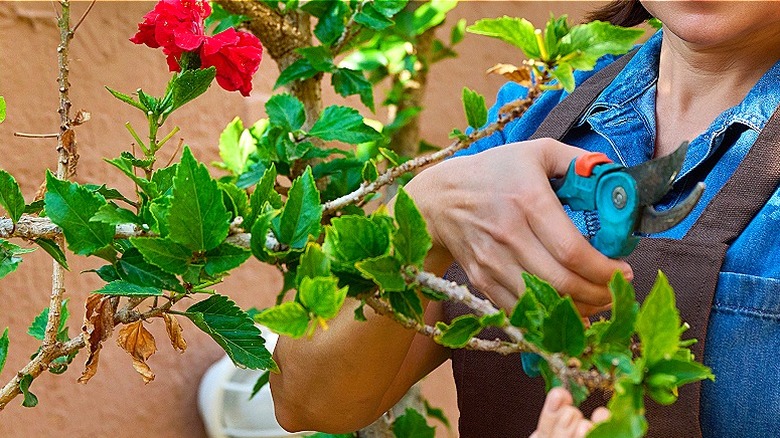Hibiscus plants are known for their vibrant and showy flowers, which come in a variety of colors, such as red, pink, yellow, and white. In addition to their beauty, hibiscus can contribute to gardens by attracting pollinators like bees and butterflies. Hibiscus shrubs, meanwhile, can provide shade and be used as a hedge or privacy screen. To enjoy such benefits of this hardy perennial, though, it’s important to know how to properly care for it, including how and when to prune a hibiscus plant.
For hibiscus, pruning plays an essential role in fostering continuous blooming throughout the season. While each hibiscus flower only lasts for a day, regular pruning can stimulate the growth of new branches, which in turn produce more buds and flowers. By removing dead or diseased branches, as well as crowded growth, pruning improves air circulation and prevents the spread of diseases. It is important to prune hibiscus plants during their dormant or low-growth period, typically in late winter to early spring, to encourage new growth and maintain their shape.
How to prune a hibiscus plant
Pruning a hibiscus shrub/tree requires a careful approach to ensure its health and aesthetic appeal. You’ll want to do your main pruning in the late winter (around mid-February) or early spring, followed by smaller cuts for maintenance during the growing season in spring and summer. To start, assess the plant for dead or diseased branches, as well as crowded growth that can impact air circulation. Then, using sharp, clean pruning shears, make a precise cut at a 45-degree angle a quarter of an inch above a node (or where a leaf or bud meets the stem). Note, the higher end of the cut should be on the outside; this angle prevents water accumulation and promotes healing.
When pruning hibiscus, pay close attention to several key aspects. First, snip off any dead or yellowing leaves, as they can drain the plant’s resources. Next, target branches that cross or rub against each other, as these can create wounds and invite disease. Be cautious not to over-prune, as doing so can stress the tree and reduce its flower output. Finally, limit the amount pruned to a third of the total growth.
When to prune a hibiscus plant

Knowing when to prune a hibiscus plant is a major factor in its care. As said, you’ll want to make your major cuts in the late winter to early spring, then provide light upkeep during the growing season. Pruning your hibiscus around mid-February catches it before it starts to expend its energy for growth.
Aside from the calendar, signs that your hibiscus plant is ready for its annual pruning include the appearance of dead or yellowing leaves, spent flowers, and overgrown branches. Remove these unsightly growths to encourage new growth next season and to maintain the plant’s shape.
Note, you’ll want to avoid pruning a hibiscus plant if it’s displaying any signs of stress, such as wilting or drooping leaves. Cutting or trimming the plant during these periods can worsen the problem; instead, leave the leaves alone (if they’re still green and not yellow) and let the plant shed them on its own. Also, refrain from pruning a hibiscus during extreme weather conditions to prevent additional stress.




